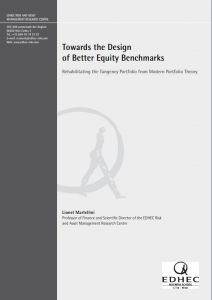

Towards The Design Of Better Equity Benchmarks: Rehabilitating The Tangency Portfolio From Modern Portfolio Theory
Following recent research on the relevance of idiosyncratic risk in asset pricing models, this paper proposes to use total volatility as a model-free estimate of a stock's excess expected return, a ...
Author(s):
Summary:
Following recent research on the relevance of idiosyncratic risk in asset pricing models, this paper proposes to use total volatility as a model-free estimate of a stock's excess expected return, and analyze the implications in terms of the design of improved equity benchmarks. It finds that maximum Sharpe ratio portfolios consistent with such expected return proxies, and built upon improved estimates of the correlation parameters, significantly outperform market cap weighted schemes on a risk-adjusted basis. This analysis, which rehabilitates the role of the tangency portfolio from modern portfolio theory, suggests that better equity benchmarks can be designed, provided that a sophisticated portfolio optimization procedure is used that relies on robust estimates of moments and co-moments of stock return distributions. This paper has important potential implications for the ongoing debate on appropriate weighting schemes for equity indices. A revisited version of this paper was published in the Summer 2008 issue of the Journal of Portfolio Management.
Register to download PDF
Register/Log in| Type : | Working paper |
|---|---|
| Date : | 13/10/2008 |
| Keywords : |
Indices |

